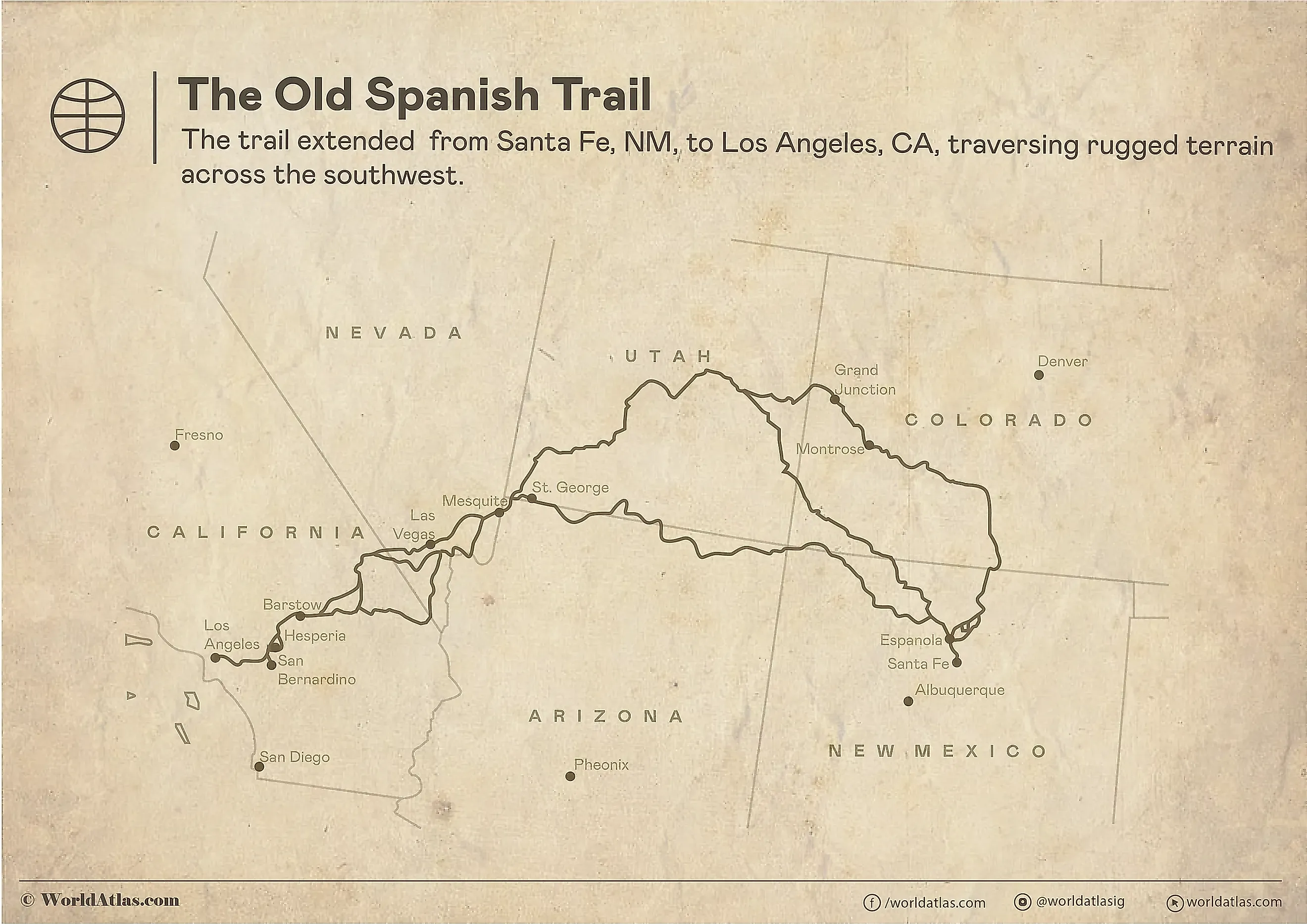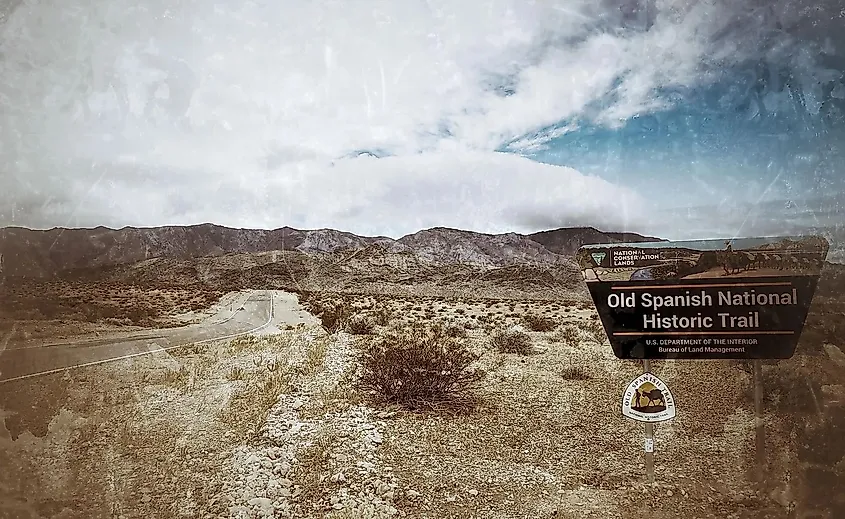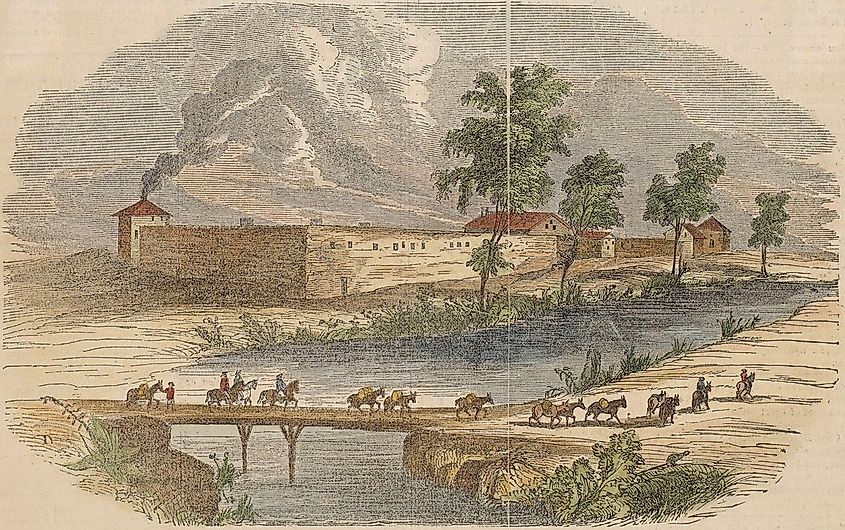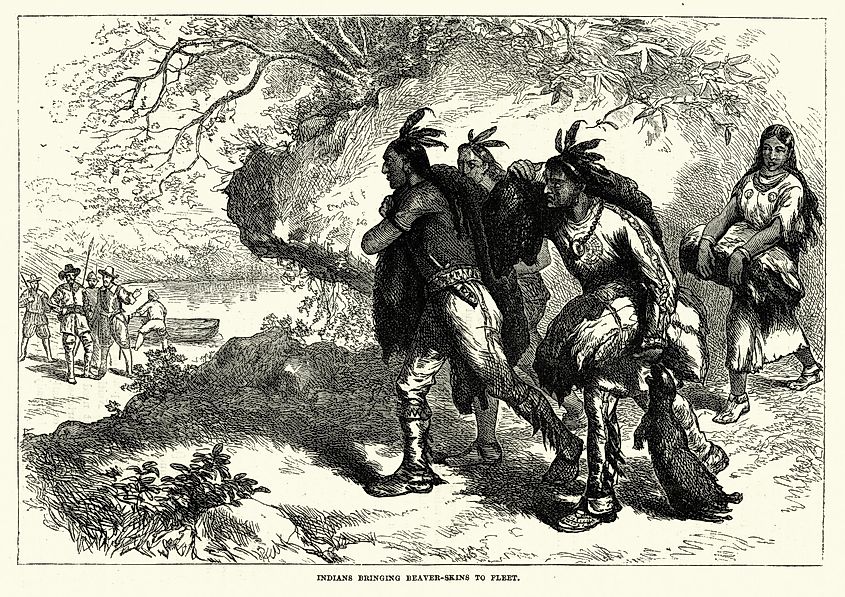
Old Spanish Trail
The Old Spanish Trail was a 2,700-mile stretch of pathway that connected Santa Fe, New Mexico, to Los Angeles, California, from the 1830s – 1850s. The trail crossed hot and lonely deserts, tall mountains, and deep canyons. It could only be traveled by using pack mules because it was too rugged and rocky to be traveled by wagons. The Old Spanish Trail was elemental in making land-locked Santa Fe the economic hub of trade between Mexico, California, and the world.

Etymology

The name Old Spanish Trail comes from American explorer John C. Fremont’s report about his 1844 expedition of the region for the United States Topographical Corps. Famed frontiersman Kit Carson led Fremont and his men on the journey from California to New Mexico. Part of their journey included traveling on the arduous Old Spanish Trail.
History

Spanish explorers had already been using the trail in the late 16th century. In the beginning, the trail was a hodge podge of small footpaths used by Native Americans, explorers, fur trappers, and early traders. But it wasn’t until 1829 when a Spanish trader by the name of Antonio Armijo, along with almost 60 men driving a pack of 100 mules carrying woolen blankets, shawls, ponchos, animal skins, quilts, and other goods, trekked the trail from New Mexico to California, that the overland trade route was established for the first time.
After trading his woolen goods for horses and mules, which were available in abundance in California, Armijo returned to New Mexico. It had taken him 12 weeks to get to California, and it was a 6-week trip back to New Mexico. His complete journey also became the first time a commercial caravan had made a round trip from Santa Fe to Los Angeles. This became a crucial point for trade on an international scale because California had access to foreign markets through its seaports, and New Mexico could now distribute its products beyond the borders of Santa Fe.
Unfortunately, woolen blankets, horses, and mules weren’t the only things being traded between the two countries on the Old Spanish Trail at this time. Human trafficking had become a part of the economic plan, too. Although slavery hadn’t been an unusual practice between various Native American tribes in the New World, after the arrival of the Europeans, it grew to great proportions. Native Americans of one tribe who were war captives of another were sold off as slaves to Mexican ranchers. Slavers, such as Ute Chief Walkara, captured men, women, and children from the Paiutes and Goshutes tribes and sold them into slavery. In the 1830s, slavery was considered illegal in New Mexico, but it didn’t stop completely until years later.
Crime on the Trail
Outlaws also used the Old Spanish Trail to travel back and forth between New Mexico and California. They frequently raided the traders and stole their horses, leaving them with heavy losses. Others raided, attacked, and looted the California ranchos and disrupted their livelihood. Still, a small number of emigrants continued to use the Old Spanish Trail to move to the West Coast, pioneering the westward movement.
In its almost 25 years of existence, the Old Spanish Trail provided the means for international trade between Mexico, California, and foreign markets. It increased the cultural and racial experiences, not always in the best way as slavery continued to thrive. It also created the means for westward expansion through immigration, albeit in a smaller way than the later California Trail and the Oregon Trail, which were wagon-drawn routes used by emigrants following the Gold Rush Era. By the end of the Mexican-American War in 1848, the Old Spanish Trail had already lost much of its importance, and by 1853, it had ceased to exist.
Today, The Old Spanish Trail is considered the 15th National Historic Trail recognized by the United States. But it isn’t clearly marked or available for continuous hiking. Over the years, parts of the trail were lost as nature took over or other sections of it became part of private property. A few areas on public land can still be viewed by walking or driving alongside the trail.











